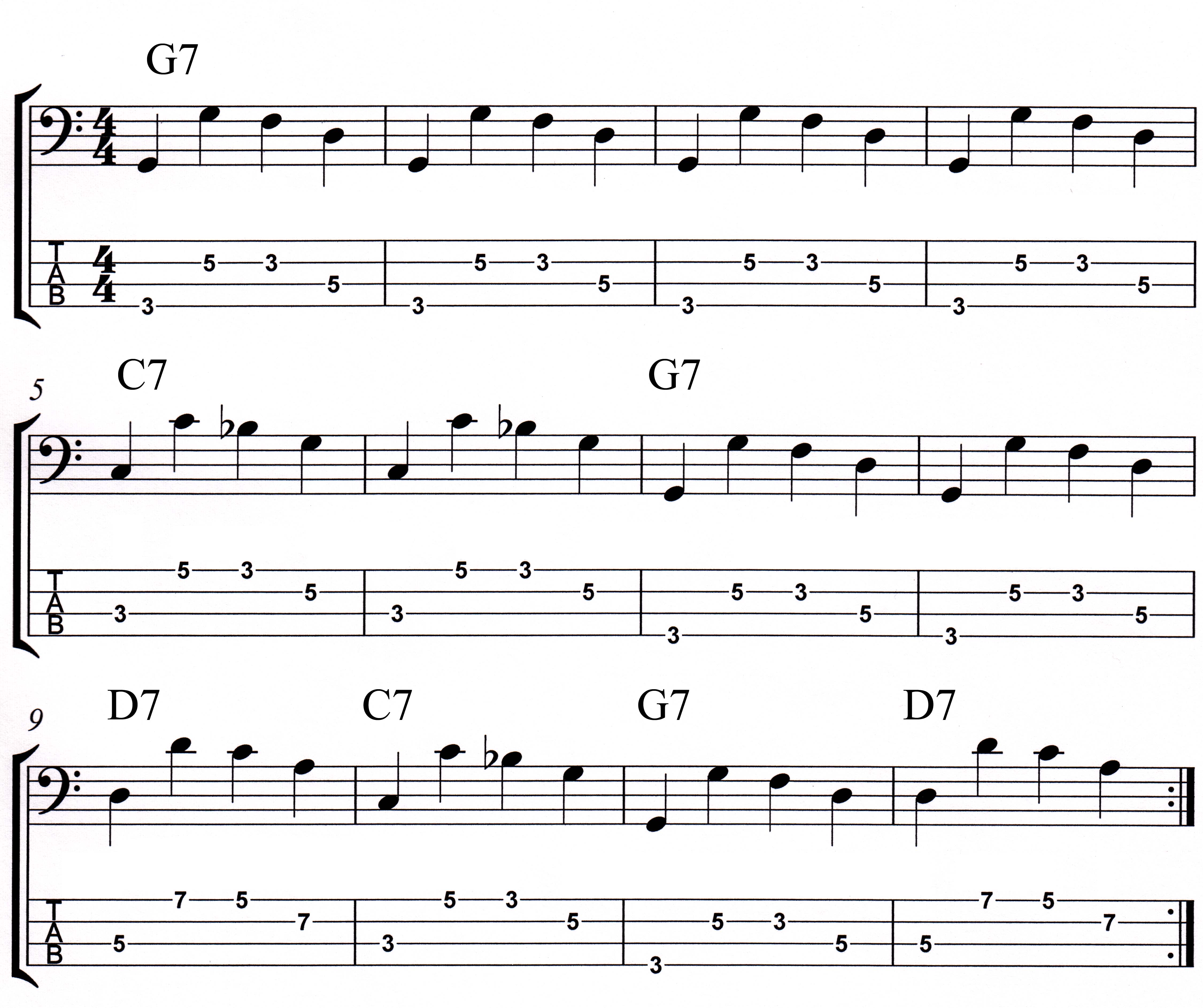
Blues Pt. 1
The Blues has been a part of the popular musical landscape for over a century now, though at first obscure and a staple of rural America. It grew out of the poverty
and suffering of the poor, particularly poor Black sharecroppers in the rural South. It's genesis can be traced back through the songs of the slaves, sung in the
fields of the plantations, which were an outgrowth from the songs brought over from Africa, but which now, instead of celebrations of life, were a lament born of
suffering.
Now, Blues infuses virtually every popular music style there is, apart from Classical music... and even then, we have an example by the Siegel-Schwall Band from the
early 1970s that literally blended a full Classical orchestra and Blues band. It seems to be out of print right now, but hopefully will be reissued at some point.
I'm sure you can play a Blues progression, it's one of the first things we can play with some degree of confidence. One was even included in the learning to read
notation portion of this series. But there's more to it than just simply comping away and filling the Bass space.
Not only should you be able to play the most rudimentary 12 bar progression there is, but it would be even better if you could play beyond just the most basic of
patterns. Most jam sessions include some Blues, either as a warm up at the beginning to get loosened up, or at some point during the session. And it may not be the
simple I, IV, V you know. If you're playing with some very good musicians, it could be a very specific song with a very specific structure where
the rudimentary bass patterns you know just won't work. You need to be versatile! So let's dive in...
The "standard" Blues progression is laid out over twelve measures, or bars, and so the name "12 bar Blues". The bass part might look something like this when played
to a I7, IV7, V7 style progression in the key of G:

This is admittedly pretty basic, and primarily employs the Pentatonic Major scale form, since we're using 7th chords in the example. But, even with the chord progression shown above, you can play some pretty interesting stuff.
Rather than simply lay out whole progressions, what follows is a series of patterns, approaches, that can be used right as they are, or tweaked, to suit the particulars of any given Blues progression you run into. Because the Blues is such a varied form, and can be a life long study all its own, a few relevant ideas will be sufficient to get you moving in the right direction.
A repeating pattern is the easiest way to create a solid part to play - and remember, but is not a hard and fast rule you must observe. The following examples illustrate a few approaches you can substitute to make your parts a little more interesting. Each example is just one or two measures, easy to play, and simple to move to the IV and the V positions when required. You will need to tweak things a bit during the turnaround.
The following pattern stays rather basic, and is played to a shuffle feel.

Sound familiar? Already know a variation of this one? Yeah, it's rather typical. But even "typical" is often not common knowledge when you are in unfamiliar territory. The basic rule to follow when you're playing something new is to "keep it simple" until you get comfortable.
This next pattern is a tried and true staple you may have heard before.

For this next example, we slow way down, maybe to around 60-72 bpm, for the "slow Blues" song you will inevitably encounter. This one covers two measure. When you
get to the "turnaround" you'll have to do a little creative tweaking to make the core of the pattern work. That means you may wish to listen to similar bass parts in
a few slow Blues tunes to get an idea how to make that happen. Yeah, homework!

This next pattern adds a bit of Funk to the feel, covers two measures, and so will need to be tweaked a bit during the turnaround section. Note, too, that it is in
the key of G minor, so even more "blue".

The whole idea here is to just introduce you to basic concepts you can use as a foundation to build your own Blues bass patterns. There are tons of them. The best way to expand your Blues vocabulary is to listen to some of the masters of the craft. I recommend listening to older Blues from the 1940s to the 1960s to get a more raw and less "rock n roll" attitude influenced sense of a more authentic representation of the form.
Almost every one of these patterns can be changed up into a Shuffle feel, a Bossa feel, or whatever. They aren't static and unyielding. Bend them, twist them and do whatever you want to them. But remember this one rule: it has to blend well with the rhythms being played or it won't work.
I also mentioned the "turnaround" a couple times. There are simple rules to follow that will guide you smoothly through and get you back to the top of the progression without looking stupid. We'll cover a few of them next time.
For now, run these ideas and get them comfortably smooth, then put them to work in the next jam when the Blues tunes come out to play.
Next time!